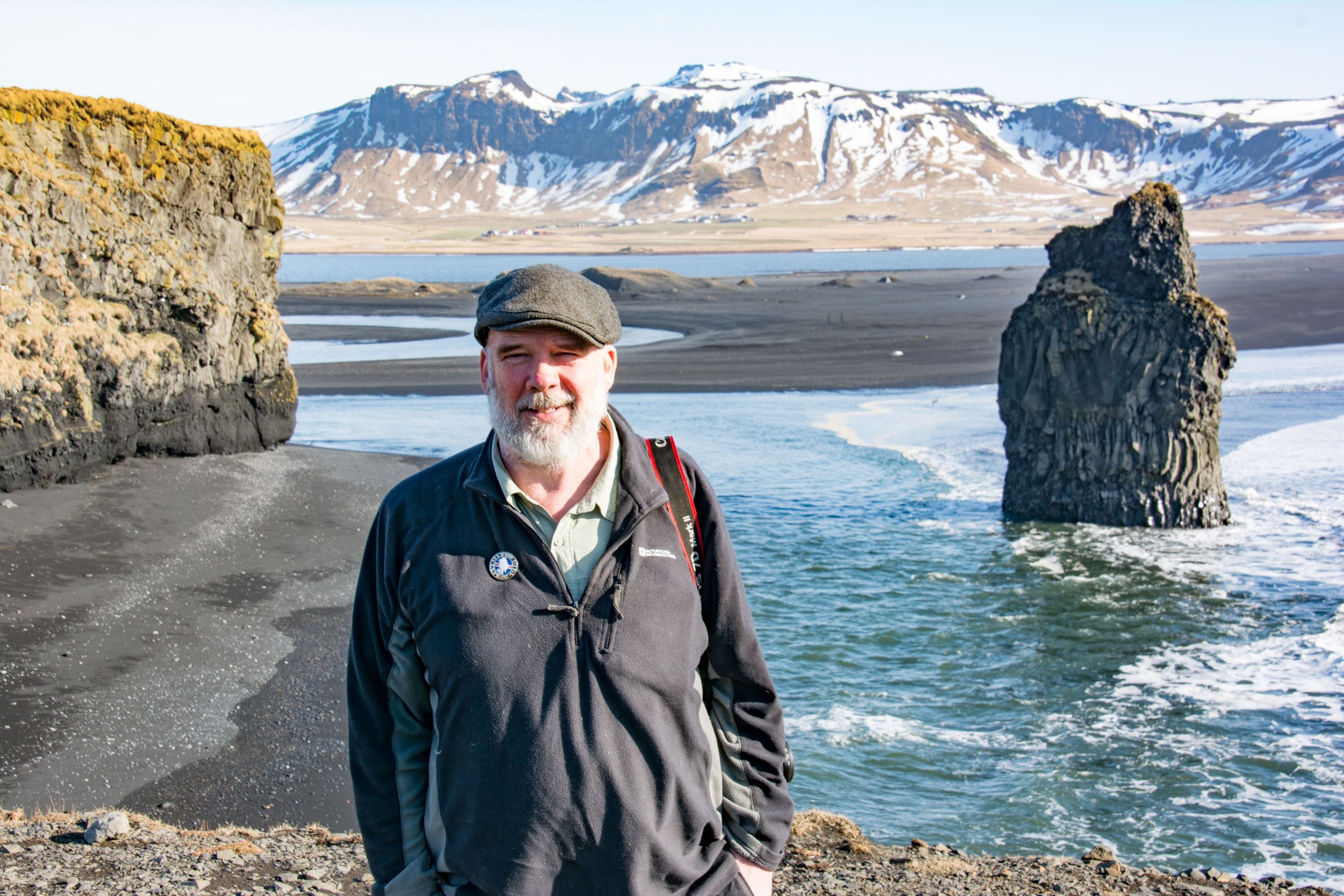North Iceland Travel Guide
North Iceland is a region that has a different spirit than the rest of the country. Here, the landscape feels more raw, powerful, and untamed, and it’s exactly that sense of primal force that makes it so captivating.
On my last trip here, I recall being jostled around as our super-jeep made its way over snow-covered roads toward Dettifoss, the mightiest waterfall in Iceland - and all of Europe. Along the way, we’d already marveled at the geothermal wonders around Lake Mývatn and made a detour to the dramatic Krafla Volcanic Caldera.
As our guide navigated the snowy terrain with ease, he chuckled, and looking over at us, said with quite a bit of mirth: "We’re a long way from Reykjavik, aren’t we?". The massive tires of the jeep effortlessly conquered the obstacles in our path, and before long, we found ourselves standing in awe before Dettifoss’ thunderous cascade – the only visitors at the waterfall.
It’s this blend of adventure, opportunity, and solitude that makes North Iceland so special. This region sees only a fraction of the crowds that visit the southern region but has just as many natural wonders, if not more.
There’s also that sense of opportunity – for new discoveries, for moments alone in the rugged landscapes, and for adventurous drives to waterfalls across snow-laden roads. North Iceland delivers a raw and exhilarating experience.
Table of Contents
See more of our Iceland articles:


What counts as “North” Iceland?
Photo: Burmesedays, CC BY-SA 3.0, via Wikimedia Commons
North Iceland is a vast and dramatic region stretching across the northern edge of Iceland, defined by six peninsulas that reach out into the Arctic Ocean.
This expansive area spans rugged mountains, serene fjords, twisting canyons, lush paddocks, and windswept black sand beaches, with the region slowly turning ever-more volcanic the closer you venture along the ring road towards the swathe of countryside north of the glacier Vatnajökull.
At the heart of North Iceland is Eyjafjörður, the longest fjord in the country and home to Akureyri, the capital of the north. As Iceland's second-largest city, I’m always pleasantly surprised rolling into town after some time on the road, a slice of civilization in what feels like an unlikely place.
It feels even bigger when you take into consideration the other small communities in the fjord, the farms, and offshore island Hrísey, home to a close-knit population.
The region’s coastline is defined by its stark natural beauty, and the target of a tourist route called the Arctic Coast Way. Tracing the outskirts of the six peninsulas, it’s a route defined by epic cliffs and steely seascapes, of driftwood-laden shores and mountains shrouded in snow almost year-round.
It’s a striking contrast to the lush greenery of the interior, and the Martian-like landscapes east of Akureyri, where the volcanic zone has molded the land through eruptions and glacial floods from Vatnajökull.
Why visit
Firstly, the major draw of North Iceland are the volcanic landscapes. Cutting under a huge swathe of countryside to the east of Akureyri, a highly active volcanic zone has slowly been molding the landscape as it sees fit. Lake Myvatn is a highlight, itself a kind-of volcanic caldera and surrounded by craters, lava fields, and hot springs.
Then there’s the Krafla Caldera, where lava fields still release steam, and the geothermal areas create enough energy to power the entire region. Further east still, the Jökulsárgljúfur Canyon, a part of the Vatnajökull National Park, highlights the sheer power of glacial floods when released.
Akureyri itself is another great reason to visit. My wife and I once spent a whole week there, and we found it to be a charming base for exploring. If you’re looking for a place other than Reykjavik to stay, and you want to avoid the frenetic pace of the ring road, Akureyri offers a surprisingly rich experience with easy access to some astounding sights.
Slowing down in Akureyri also allows you to discover the quieter, hidden gems like serene forests, simple walking trails, and long valleys largely untouched by tourists. It’s easy to escape the ‘city’ and immerse yourself in picturesque farmland, where horses roam and snow-capped mountains serve as a stunning backdrop.
If it all sounds a bit like a Nordic paradise, that’s because it is! This was some of the most hotly contested countryside when the Vikings first arrived.
Essentially, North Iceland combines the key infrastructure and attractions found elsewhere in Iceland with a more intimate and untouched atmosphere. Here, both locals and adventurous travelers can explore and connect with nature in a way that feels both grand and personal.
Where is North Iceland and how to get here
Photo: Reykholt, CC BY-SA 4.0, via Wikimedia Commons
North Iceland is a big distance away from Reykjavik, and really feels like it. Here, the politics and busyness of the capital fade into the background, and rural farms and small towns are still the main way of life.
It’s one of the largest regions in Iceland; you could be on a peninsula in the northwest, but still be about a 10-hour drive from the northeast peninsulas.
For a simple look at getting here, we’ll use the city of Akureyri as the gateway to the north, which is conveniently in the middle of the region and is also its capital city.
How to get here
By Car: How quickly one can drive between Reykjavik and Akureyri can be a bit of a competition between some Icelanders. But in general, it will take around five to six hours to drive the 260 miles (420 kilometers) if you don’t make any stops along the way.
But it’s likely you will, since the landscape slowly changes from volcanic plains to the gorgeous fjord scenery of the northwest and the Skagafjörður area.
By Air: For those pressed for time or seeking a quicker route, flying is an excellent option. Air Iceland Connect and other local airlines offer regular flights from Reykjavík Domestic Airport to Akureyri Airport, with a flight time of approximately 45 minutes.
The flight is a stunning route over the Highlands, and the approach to Akureyri is also special as the plane glides over the fjord and lands against a backdrop of mountains.
By Bus: There are also regular buses between Reykjavik and Akureyri, letting you travel here for a more affordable price and then join day tours at will.
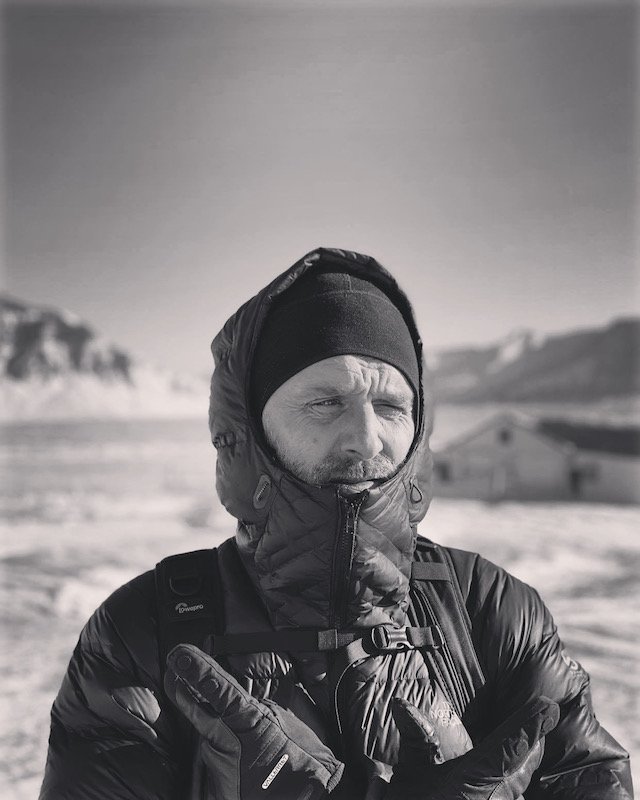
Connect with a local expert in Iceland for help perfecting your itinerary, answers to all your travel questions, and fabulous local tips for a better visit!
Best time to visit
Autumn - always my choice for when to visit
I’ve been to North Iceland in all seasons and for me, the best time to visit is in the autumn.
While it might be getting darker and colder by this time of year, there’s something so cozy about the clutch of villages and towns that cling to the coast during this season.
And out of the whole country, the north might just be the best place to enjoy the changing colors of the fall. Yes, snow will most definitely be on the horizon, but it won’t have arrived yet, making this an ideal time to explore the region without the crowds and without the the lingering snows typical of the spring.
Temperatures range from 30°F to 50°F (-1°C to 10°C), so while it’s definitely chilly, it’s not so cold as to make outdoor activities impossible or really even unpleasant.
Winter
Winter brings a dramatic shift in North Iceland, with temperatures plunging to between 10°F and 30°F (-12°C to -1°C). The region experiences short daylight hours and frequent snowfall; images of Akureyri blanketed in snow on the news are quite common while Reykjavik continues with its grey skies and rain.
During this season, there’s still a surprising amount to do considering the volcanic heat around Myvatn and the geothermal areas make it accessible year-round. Frequent snow ploughs based in Akureyri also mean that roads a quickly cleared if there is any heavy snowfall.
Other activities include husky sledding, snowmobiling, and skiing in Akureyri as well as the Tröllaskagi Peninsula.
Spring
Spring ushers in a gradual warming trend in North Iceland, with temperatures ranging from 20°F to 45°F (-6°C to 7°C). Snow begins to melt, although much more slowly than in South Iceland, so travel can still be tricky well into the season.
But the bonus is that the daylight hours are increasing, birds are returning to the region, and waterfalls begin to churn at full power.
Summer
Summer in North Iceland is a season of extended daylight, with temperatures ranging from 50°F to 60°F (10°C to 15°C), very pleasant for outdoor exploration.
The north is also known for its days of much higher temperatures, which can sometimes reach as high as 75°F, much to the annoyance of Icelanders in Reykjavik enduring yet another grey and rainy summer.
Summer is of course also the most popular time to be in Iceland, so everywhere is crowded, although much less so than in South Iceland.
How long to spend
For most people traveling in Iceland, 3 days is usually enough to visit the major attractions in the north before moving on in other directions. This gives you a good amount of time in the region without having to sacrifice anything else in your journey (which is typically along the Ring Road, as that’s what bring most travelers to the north).
With three days, you can dedicate one day to the Jökulsárgljúfur Canyon and Húsavík, then another around Lake Myvatn and in Akureyri, and a final day looping around the Tröllaskagi Peninsula and into the Skagafjörður region.
Here’s an idea of how you could split up those three days, assuming you’ll be arriving here from East Iceland.
Day 1: Jökulsárgljúfur & Húsavík
Driving the Ring Road from East Iceland takes you through an elevated stretch of countryside that is basically the Highlands. The desolate scenery continues as you detour north from Route 1 to Jökulsárgljúfur. which is where you’ll find Dettifoss, Europe’s most powerful waterfall, as well as the Ásbyrgi Canyon at the very top.
Between both of these attractions, you could easily spend a couple of hours expliring.
From there, loop around the top of the peninsula from Ásbyrgi to arrive at Húsavík, a convivial town with a busy harbor of whale watching boats heading out on tours every day from April until October.
Stay the night in Húsakík.
Day 2: Lake Myvatn and Akureyri
On your second day, I suggest setting out for the 45 minutes drive back down to Lake Mývatn and spending the entire day exploring the volcanic sights on the outskirts of the lake as well as the nearby Krafla Volcanic Crater, just over the hill to the east.
After you’ve finished touring the area, stop off at the Goðafoss waterfall on your way into Akureyri, capital of the north.
Once in the city, spring for a nice dinner at one of the many great restaurants downtown before heading to bed.
Overnight in Akureyri.
Day 3: Tröllaskagi & Skagafjördur
From Akureyri, begin by driving west along the ring road in the direction of Reykjavik. Then, turn north to careen around the beautiful coastal road that skirts the Tröllaskagi Peninsula. You’ll pass Hrísey Island in the fjord and will get to enjoy some beautiful coastal landscapes as the road cuts into the huge mountains that make this peninsula one of the most popular places for skiing in winter.
As you come down the western side of the peninsula, you’ll be entering the Skagafjörður area, a place of beautiful horse farms and lush countryside. There’s a black sand beach outside of Sauðárkrókur, and a tempting hot spring called Grettislaug to the north of town. Both make for very pleasant stops.
Head south and you’ll pass the historic turf-roofed farmhouse of Glaumbær, one of the best in the country.
From here, the ring road continues west, taking you back in the direction of the Westfjords, West Iceland, and the capital, Reykjavik.
Where to stay
For an extended stay in North Iceland, the city of Akureyri makes the most sense as your primary base. From here, it’s an easy drive to many of the areas of interest, including Lake Myvatn, up around the Tröllaskagi Peninsula, into the Skagafjörður region to the west, and east to Jökulsárgljúfur Canyon and the Vatnajökull National Park.
And if you won’t have a car, Akureyri is the starting point for most tour operators offering day tours to the above-mentioned places, so it’s by far the easiest place from which to get around if you don’t have your own transportation.
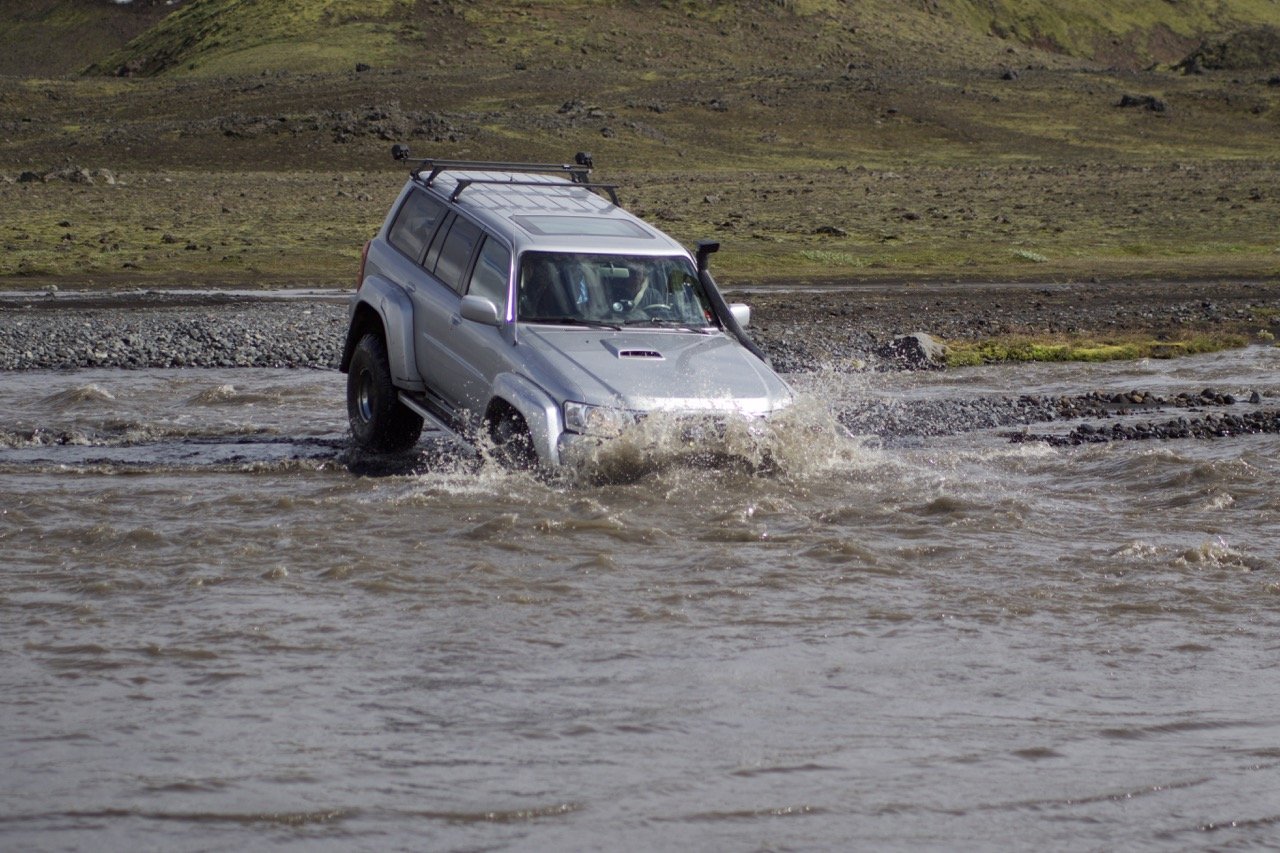
What to see and do in North Iceland
As I mentioned earlier in this article, North Iceland is a very large region of the country, and it would take you many hours to drive from one end to the other of it.
With that in mind, I’ve sort of sub-divided the region up into various different categories, first covering the main towns to check out, then giving you lots of ideas for the 2 most visited areas - the Diamond Circle and Lake Myvatn -, and finally wrapping things up with a selection of other other sights, activities, and places of interest all throughout northern Iceland.
Towns to visit






Akureyri
Akureyri, as the capital of the North, is the most obvious place that’s worth visiting in the region. This is the largest city outside of Reykjavik, nestled on the western side of the long fjord called Eyjafjörður just over 60 miles from the Arctic Circle.
Whenever I roll into town after some time on the road, it’s always a bit of a relief to experience a small slice of civilization again (and to stop at traffic lights!).
Despite its small size, the city swells when you consider the whole of the fjord as one destination, rounding up the small settlements further down the valley as well as all the farms. There’s also quite a good arts scene here, and it’s an ideal base for day trips to see some highlights of the north.
Siglufjörður
Siglufjörður is a charming fishing village located on the northern coast of the Tröllaskagi Peninsula, about 47 miles northwest of Akureyri. If you need only one reason to visit Siglufjörður, let it be the award-winning Herring Era Museum.
Once Iceland’s busiest port in the early 20th century, Siglufjörður thrived when herring were plentiful offshore, attracting people from around the world eager to partake in the lucrative industry. The town was a bustling hub, filled with diverse languages and cultures.
However, the herring stocks were eventually depleted, causing the industry to decline and the town’s population to dwindle. Today, while tourism has brought some revival, for me the town still feels a bit eerie, I think, mostly because there are so many houses and not many people about.
Dalvík
Dalvík is a small town situated on the western shore of Eyjafjörður fjord, about 44 km north of Akureyri. While it enjoys some spectacular natural surroundings, I come here always for a serving of fish soup at the town café called Gisli Eirikur Helgi Kaffihús, and you should too. The café’s ambiance is impeccable; part-fisherman’s den part-cozy wooden cabin. It’s the ideal spot for lunch.
And if you fancy hanging around, there are whale watching tours that depart from here, and you can catch the ferry from the harbor to Grimsey Island, the speck of an island that is Iceland’s only territory above the Arctic Circle.
Sauðárkrókur
Sauðárkrókur, located in the Skagafjörður region, is the largest town in northwest Iceland, approximately 56 miles west of Akureyri. The town is known for its rich cultural heritage, with attractions such as the Glaumbær turf farmhouse museum and the Icelandic Emigration Center.
Set along the shore of the fjord, I’ve always thought that the town doesn’t get enough love from visitors. I have fond memories of trying out the VR experience at 1238 – The Battle of Iceland, where I was transported into Iceland’s bloodiest battle back when Viking clans in the area vied for power.
This unique experience provides a fascinating glimpse into the area's turbulent history.
Húsavík
Húsavík sitting on the eastern shore of Skjálfandi Bay, is often hailed as the whale-watching capital of Iceland. Located about 57 miles northeast of Akureyri, the town offers exceptional opportunities for close encounters with various whale species, particularly during the summer months.
Húsavík’s pleasant harbor and colorful homes make it one of Iceland’s more charming spots, and there’s the fantastic GeoSea hot springs on a hill above town (from where you might just see whales splashing in the bay).
Somewhat recently, Húsavík has gained additional fame thanks to the film Eurovision Song Contest: The Story of Fire Saga, where Will Ferrell and Rachel McAdams' characters call Húsavík home.
Raufarhöfn
Raufarhöfn is one of Iceland's northernmost towns, located on the Melrakkaslétta peninsula, approximately 131 km northeast of Húsavík. This remote and tranquil village is as quiet as they come, but it’s a good base if you’re planning on venturing off into the Langanes Peninsula.
The town is also known for the Arctic Henge, a colossal stone monument inspired by ancient Norse mythology and designed to capture the midnight sun.
Main sights along the Diamond Circle
Much like the Golden Circle in southwest Iceland, the Diamond Circle bills itself as an easy day trip that takes in some of the region’s best sights. It’s a bit longer than the Golden Circle, so if you’re leaving from Akureyri in your own car, you’ll probably need to budget around eight to ten hours in total.

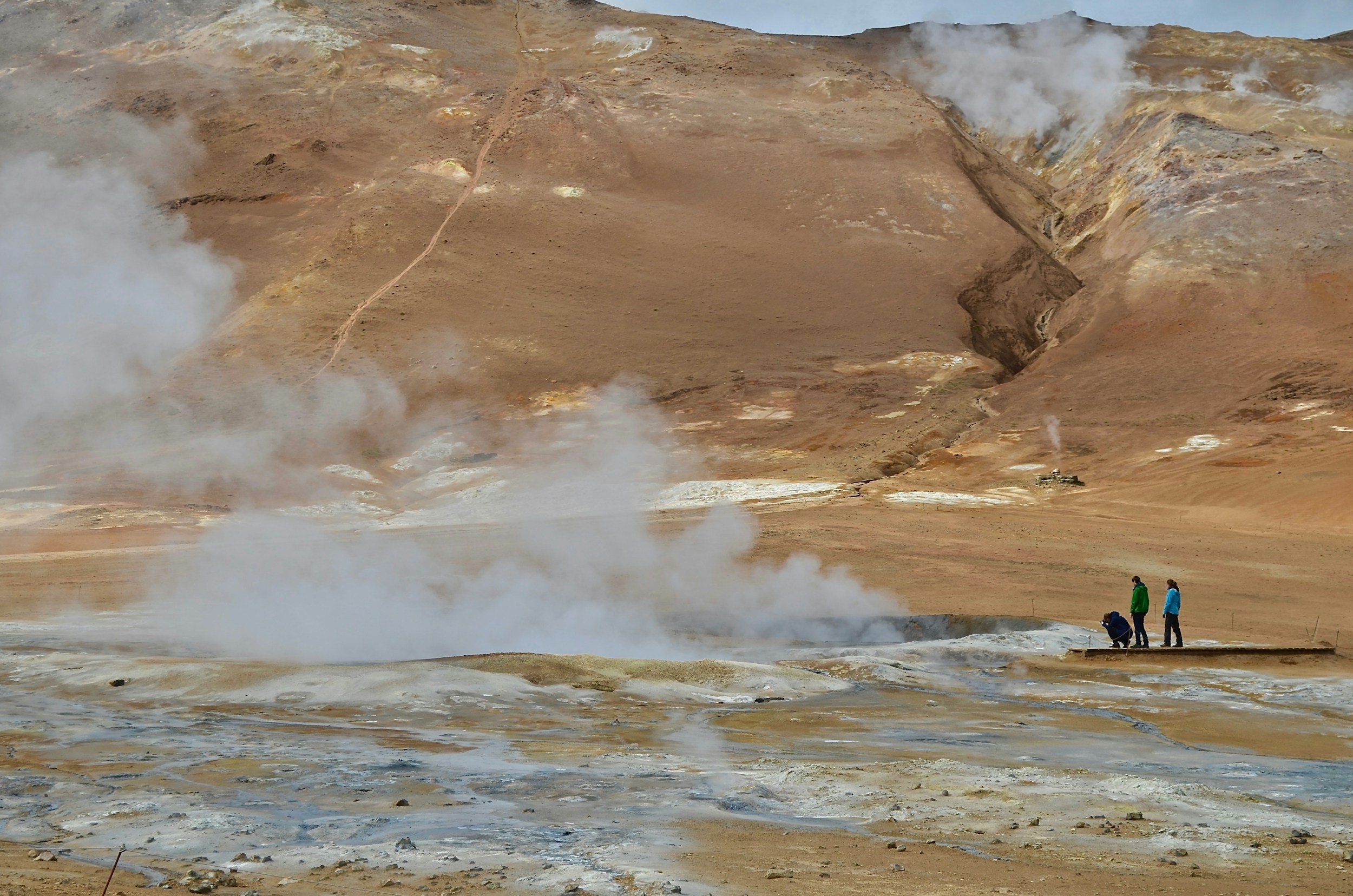


Goðafoss Waterfall
Goðafoss, known as “The Waterfall of the Gods,” is one of my favorite spots in Iceland. This majestic waterfall, where a local chieftain famously threw his pagan idols after Iceland adopted Christianity, is simply beautiful.
The semi-circle of water rushing over the cliffs of grey granite churns into white and steely blues, and the strong raging of the river feels very wild and very ‘north Iceland’ somehow. For me, the views are better from the eastern side of the river, but you can’t go wrong really.
If you have a 4x4, also make sure to drive down the road further south on the F-road, where Aldeyjarfoss crashes down the same river between cliffs of hexagonal basalt.
Námaskarð Geothermal Area
It’s impossible to miss this geothermal patch of earth when driving on the ring road. Just over the hill to the east of Lake Myvatn, the earth turns a rusty orange, and steam rises from vents in the earth and boiling, belching pools of thick mud.
This is Námaskarð, sometimes also called Hverir, a boiling geothermal area where you can walk around the pools and Martian-like landscape. It’s particularly striking when you look across the ring road and the mountains are once again green and lovely.
Dettifoss Waterfall
Star of the Diamond Circle and part of the Vatnajökull National Park, Dettifoss is the most powerful waterfall in Europe and it’s truly a sight to behold. Standing at the edge of this thundering cascade, you can feel the raw power of nature as the water crashes down into the canyon and shakes the earth beneath your feet.
The mist rises, catching the sun in the right setting, setting a beautiful scene. Dettifoss is accessible via a short hike from the parking area, and the sheer force and volume of the water make it an unforgettable experience for any traveler.
Ásbyrgi Canyon
To this day, some of my fondest memories of Iceland are from my visits to Ásbyrgi Canyon. This is where my partner went to summer camp growing up, and it’s a place that holds a special charm.
We camped here one spring in a campervan, parking next to the towering canyon walls and barbecuing on the lush green grass. In autumn, hiking along the rim of the canyon and picking blueberries is an exceptional experience.
The horseshoe-shaped canyon, with its towering cliffs and serene forest, offers a perfect blend of natural beauty and tranquility.
Main sights surrounding Lake Mÿvatn
As with the Diamond Circle, Lake Mÿvatn is one of the other main draws to northern Iceland and it’s big enough and has enough to offer that I’ve put together individual entries below for some of the most significant sights around the lake.




Skútustaðagígar Craters
On the southern side of Lake Myvatn are these set of what are called pseudo-craters, jutting up in the landscape. A sign at the beginning of the easy-going walking trail explains how they were created when hot lava flowed over wetland areas, causing steam explosions that formed the unique, small craters.
Dimmuborgir Lava Field
An impressive lava field where the tall pillars of lava rock are unique in Iceland. Another easy-going walking trail to enjoy the rock formations, and Icelandic legend also tells is that this area is home to the Icelandic Yule Lads, the 13 cheeky Santa Clauses that leave presents in children’s shoes in the lead up to Christmas Eve.
Look out for a cave where you can find the remains of one of their camps.
Hverfjall Volcano
Hverfjall is a striking, almost perfect circular volcanic crater rising from the eastern side of Lake Mývatn. Formed around 2,500 years ago during a massive explosion, its sheer size and distinctive shape make it a standout feature in the landscape.
You can hike up to the rim, which offers panoramic views of the surrounding lava fields, volcanic formations, and the shimmering Mývatn Lake. It’s a relatively easy but steep climb, with a well-marked trail leading up to the crater's edge.
Myvatn Nature Baths
My first experience at Myvatn Nature Baths was on a stormy afternoon, where the wind howled, and rain lashed the landscape. Against the weather, the warm, milky blue waters provided a perfect refuge.
Soaking in the geothermal pools, surrounded by the dramatic volcanic scenery, was relaxing and invigorating. It has become far more popular than the first time I visited though and is currently undergoing renovations to expand.

Connect with an Iceland local expert for help perfecting your itinerary, answers to all your travel questions, and fabulous local tips for a better visit!
What to see and do elsewhere in the region
Grímsey Island. Photo: MosheA, CC BY-SA 2.5, via Wikimedia Commons
Take a whale watching tour
North Iceland is a premier destination for whale watching, and Húsavík is the crown jewel, taking the crown for whale-watching capital of Iceland. The town's harbor bustles with traditional wooden ships ready to take you into Skjálfandi Bay, where whales feast on abundant summer krill.
Seeing whales in the water is always a thrill, no matter if you’ve seen them before. Tours also depart from Akureyri, and from Dalvik as well.
Go white water rafting at Varmahlíð
For adrenaline seekers, white water rafting in Varmahlíð offers an exhilarating adventure in the heart of North Iceland. A torrent of glacial meltwater roars between the towering canyon walls, a fierce dance of icy currents and rugged basalt cliffs.
In this secluded and untamed countryside, the river Austari Jökulsá (translated as East Glacial River) originates from the northern edge of Hofsjökull, a glacier nestled in the central highlands and meanders through 50 kilometers of untouched wilderness before plunging into a dramatic 15-kilometer-long gorge. This is where tours venture, tackling the river’s power.
Hit the slopes
In winter, North Iceland becomes a top destination for skiing - provided the weather cooperates. The slopes around Akureyri, especially the popular Hlíðarfjall ski resort, offer convenient access from the town.
For a more adventurous experience, skiers can head to Dalvik, Ólafsfjörður, or Siglufjörður, all nestled on the Tröllaskagi Peninsula and surrounded by impressive mountains.
And in case you’re seeking an even more remote adventure, heliskiing tours provide access to pristine slopes in the heart of the peninsula, though this exclusive experience comes at a premium price.
Visit Glaumbær Farm
Of all the turf houses in Iceland to see, Glaumbær Farm might be the best. It’s a great glimpse into Iceland’s past (a lot of people lived like this not so long ago!), and a nice departure from the adventure and outdoorsy type activities that so often dominate trips in Iceland.
This historic turf farmhouse is now a museum, with well-preserved rooms filled with interesting items from the 18th and 19th centuries.
Set off on a road trip along the Arctic Coast Way
The Arctic Coast Way is a driving route that follows the northern coastline for 560 miles of pristine, rugged beauty. Here, black pebble beaches are scattered with driftwood, fierce winds clash against basalt cliffs and snow-capped peaks, and you’ll feel a deep, sometimes scary, sense of solitude.
Starting from the village of Hvammstangi, the road meanders along the intricate shoreline of the northern peninsulas, each featuring its own geological marvels, legends, and wildlife, before concluding in the charming hamlet of Bakkafjörður.
The Langanes Peninsula
The Langanes Peninsula, with its windswept cliffs and remote beauty jutting out of the northeast corner of Iceland, feels like the edge of the world. It is one of the loneliest places I’ve ever been in the country, and the sense of solitude was intense on the foggy day in the summer when I drove out here along its dirt roads.
I found gorgeous bird cliffs, especially at Fontur, where thousands were swarming on the cliffs and in the sea, and there were also eerie abandoned farms, a disused radar station from the war, and a completely abandoned fishing village left to the elements.
For those looking for a destination far from the main tourist trail, this is it.
The Arctic Henge
I’ll admit it, at first, I thought the Arctic Henge was a bit of a gimmick. Someone erecting huge stones in a circle up in the middle of nowhere to draw tourists in? But upon first seeing it, I changed my mind. This is an atmospheric spot, and I’ve seen pictures of the northern lights glowing above the giant pillars, and it’s definitely true that this is one of the better spots to try and catch the aurora on camera.
But what really changed my mind was the thought that the owner put into this; it is clearly a creative passion project. Inspired by the Norse poem Völuspá from the Edda’s Saga, it features stone arches and statues that capture the light of the midnight sun and northern lights, and represent mythical characters, including 72 dwarves symbolizing the seasons.
Catch the Ferry to Grímsey Island
If you think Northern Iceland’s coastline feels windswept and remote, a trip to Grímsey Island will take that sense of isolation to another level. As Iceland’s most secluded inhabited island, Grímsey is home to just a handful of determined locals and millions of seabirds.
The landscape is dominated by rugged basalt formations, biting winds, and turbulent waves crashing relentlessly against the shores from every direction, and just it’s an amazing place to experience.
You can fly from Akureyri or catch the ferry from Dalvik.
Grettislaug hot spring
I’ve already mentioned Grettislaug above, but it’s one of the country’s most beautiful hot springs, so why not talk a bit more about it?!
North of the town of Sauðárkrókur, this natural hot spring is named after the legendary outlaw Grettir the Strong, who is said to have bathed here after swimming to shore from the island in the middle of the fjord. Remote, beautiful, and quiet, it’s a great spot to enjoy some time in the hot water.
The Forest Lagoon
Iceland doesn’t have many forests, which makes The Forest Lagoon hot spring extra special. Located on the opposite side of the fjord to Akureyri, this luxurious spa and bath features a clean design and fantastic views, tucked away in a quiet, wooded area.
You never realize you’re missing trees when traveling in Iceland until you come across some.
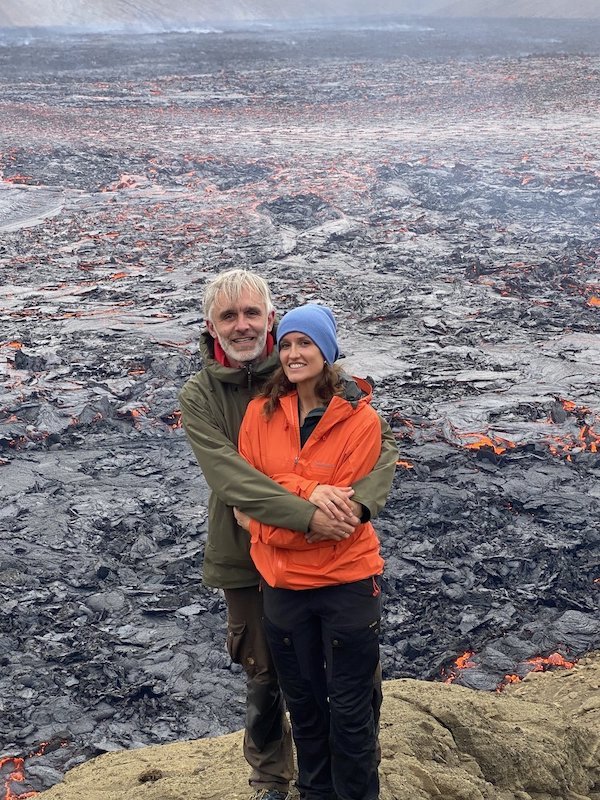

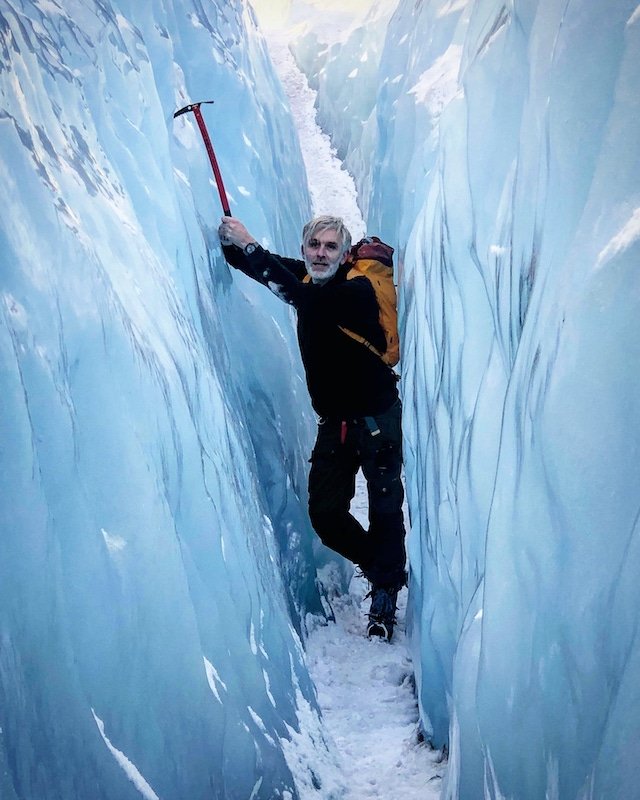


Connect with an Iceland expert!







